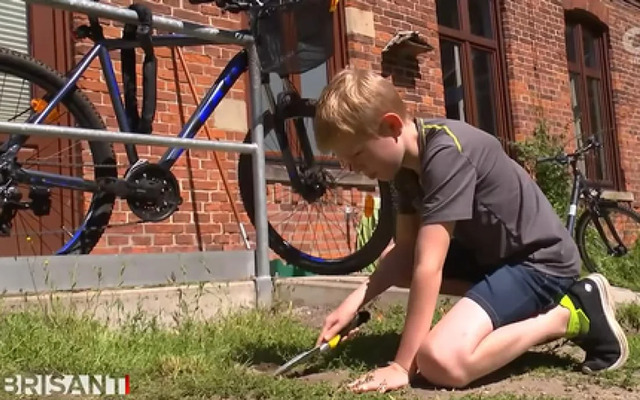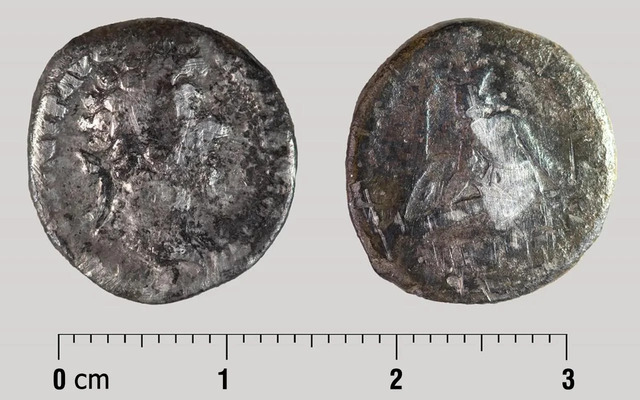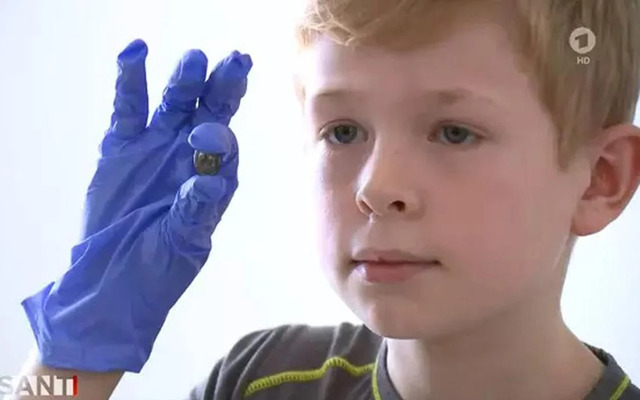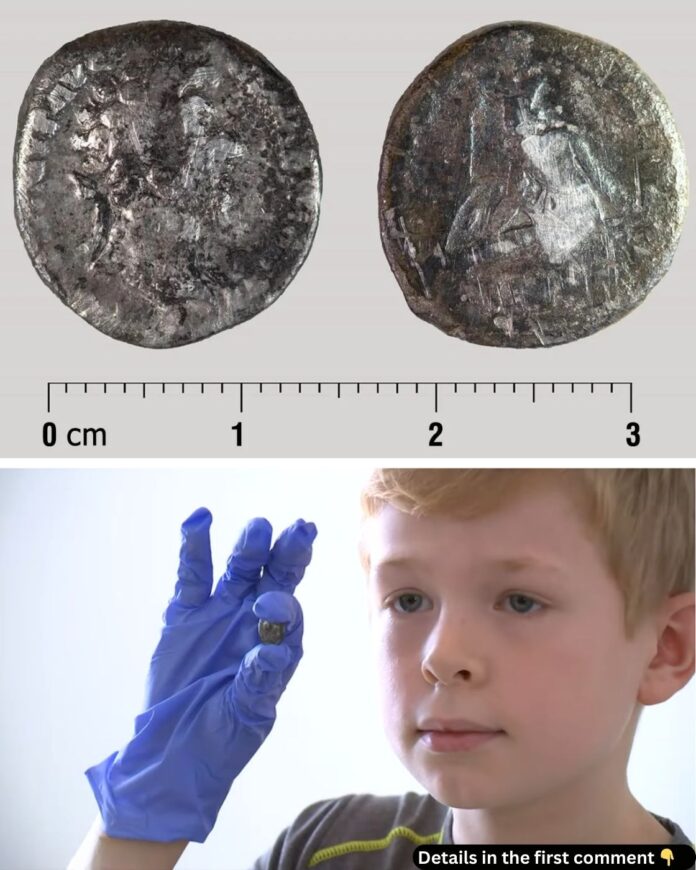In the most unexpected corners of the world, history often reveals itself in remarkable ways. For 8-year-old Bjarne, a playful day in his school’s sandbox turned into a moment of incredible discovery when he unearthed an ancient Roman silver coin dating back 1,800 years. This seemingly ordinary playground find has since captured the attention of archaeologists and historians, offering a glimpse into a time when the Roman Empire’s influence stretched far and wide. What stories does this coin hold, and how did it end up in northern Germany?
An Extraordinary Find in a Humble Sandbox
In August 2022, young Bjarne was enjoying a typical school day, playing in the sandbox with no idea that his discovery would make headlines a year later. As his fingers brushed against a shiny object, he instinctively picked it up and realized it was something unusual. Overcome with excitement, he rushed home to show his family. His parents, recognizing the potential importance of the find, contacted local authorities, leading to an archaeological investigation.

Experts quickly confirmed that the small silver object was a Roman denarius. Weighing 2.4 grams, the coin had been minted nearly two millennia ago during the reign of Emperor Marcus Aurelius Antoninus (CE 161–180), one of Rome’s most iconic rulers. This discovery was not just a thrilling moment for Bjarne but also a significant historical find for the city of Bremen.
A Coin with a Rich History

The denarius is more than just an ancient coin; it tells a story of the Roman Empire during its zenith. The Pax Romana, a period of relative peace and stability across the empire, defined the era of Marcus Aurelius Antoninus. However, this time also saw challenges, including inflation, which led to a decline in the silver content of coins. The denarius discovered by Bjarne offers a glimpse into this economic shift, providing valuable insight into the currency practices of the Roman Empire.
State archaeologist Uta Halle explained that the silver denarius exemplifies the diminishing silver content in Roman coins as inflation took its toll on the economy. Such coins, once symbols of Rome’s wealth and power, became markers of an empire grappling with financial strain. The artifact, therefore, not only represents a piece of Roman history but also reflects the broader socio-economic context of the time.
Video
Uncover amazing archaeological discoveries made by accident – watch the video to see how chance led to some of the most extraordinary finds in history!
How Did a Roman Coin Reach Bremen?
One of the most intriguing aspects of this discovery is its location. Bremen, a city in northern Germany, was never under Roman control. During the era when the coin was minted, the region was home to the Chauci, an ancient Germanic tribe known for their seafaring skills and trade with the Romans. So how did this coin find its way into a school sandbox?
Historians and archaeologists have proposed several theories. One possibility is that the coin arrived in Bremen through trade. The Chauci likely exchanged goods with Roman merchants, making it plausible that coins circulated as part of these transactions. Another theory suggests that the coin might have been carried to the region by a traveler or a Roman soldier and later lost. A more whimsical idea is that it was washed up by the nearby River Weser, which flows through Bremen, carrying the coin from distant lands. Regardless of how it arrived, its discovery raises fascinating questions about cultural interactions between Romans and Germanic tribes.

Recognition and Legalities
The young discoverer, Bjarne, received praise for his “alertness and curiosity” from state archaeologists. To encourage his budding interest in archaeology, he was awarded two books on the subject. However, under the Bremen Monument Protection Act, the coin legally belongs to the state. While Bjarne will not be able to keep the artifact, there are plans to preserve it and possibly display it at the Focke Museum in Bremen.
Dr. Uta Halle, head of the department of prehistory and early history, emphasized the significance of this discovery for Bremen. Roman coins are a rarity in the city, making this find all the more special. The museum hopes to exhibit the coin as a symbol of Bremen’s connection to broader historical narratives, offering visitors a tangible link to the past.
The Broader Significance
This discovery is not just a local story; it contributes to a broader understanding of historical interactions between Romans and Germanic tribes. Coins like the denarius serve as artifacts of cultural exchange, shedding light on trade routes, economic practices, and the movement of people in ancient times. They also underscore the enduring influence of the Roman Empire, whose reach extended far beyond its political boundaries.
For Bremen, a city with little direct connection to the Roman world, this coin serves as a reminder of the interconnectedness of ancient societies. It also highlights the importance of archaeological preservation and the role of ordinary people, like Bjarne, in uncovering pieces of history.
Video
Explore the top 20 greatest archaeological discoveries ever made – watch the video to see these awe-inspiring finds that have shaped our understanding of history!
Conclusion
Bjarne’s accidental discovery in a school sandbox has brought a piece of Roman history to light in an unexpected place. The 1,800-year-old silver denarius is not just a coin; it is a window into the past, offering insights into the Roman Empire’s economy, its interactions with Germanic tribes, and the enduring legacy of ancient civilizations.
While Bjarne may not be able to keep the coin, his find has sparked excitement and curiosity, reminding us that history often lies hidden in the most ordinary places. This remarkable story underscores the value of curiosity, the importance of preserving our heritage, and the way small moments can lead to extraordinary discoveries.
